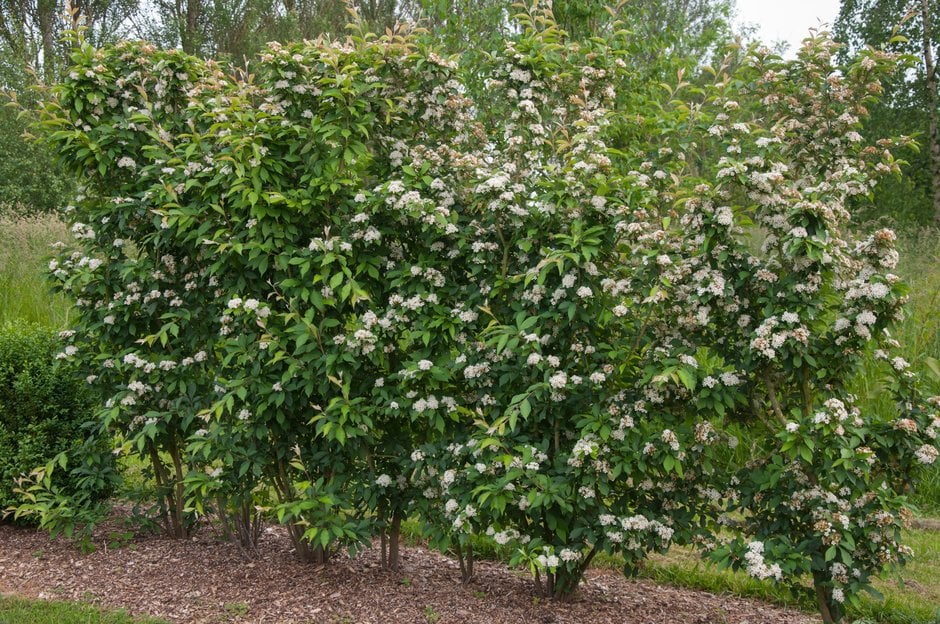Photinia villosa
oriental photinia
A small deciduous tree or large shrub to 5m, with woolly young shoots, and ovate leaves to 8cm in length, with sharply serrated edges. Leaves are bronze when young. maturing to dark green and turning bright orange and red in autumn. Corymbs of small white flowers in late spring are followed by oval-shaped, bright red berries
Size
Ultimate height
4–8 metresTime to ultimate height
10–20 yearsUltimate spread
2.5–4 metresGrowing conditions
Moisture
Moist but well–drained, Well–drainedpH
Acid, NeutralColour & scent
| Stem | Flower | Foliage | Fruit | |
| Spring | White | Green Bronze | ||
|---|---|---|---|---|
| Summer | Green | |||
| Autumn | Orange Red | Red | ||
| Winter |
Position
- Full sun
- Partial shade
Aspect
North–facing or West–facing or South–facing or East–facing
Exposure
Exposed or Sheltered Hardiness
H5Botanical details
- Family
- Rosaceae
- Native to GB / Ireland
- No
- Foliage
- Deciduous
- Habit
- Bushy
- Potentially harmful
- Fruit are ornamental - not to be eaten. Wear gloves and other protective equipment when handling. Pets: Fruit are ornamental - not to be eaten - see the HTA guide to potentially harmful plants for further information and useful contact numbers
- Genus
Photinia can be evergreen or deciduous shrubs or trees, with simple leaves and panicles of small white flowers, usually followed by red berries
- Name status
Correct
- Plant range
- China Japan Korea
How to grow
Cultivation
Grows best in fertile, humus-rich soil in sun or partial shade. See photinia cultivation
Propagation
Propagate by semi-hardwood cuttings in summer. Or propagate by seed sown in containers, in a cold frame in autumn
Suggested planting locations and garden types
- City and courtyard gardens
- Wildlife gardens
- Cottage and informal garden
- Low Maintenance
- Flower borders and beds
Pruning
Pests
Generally pest-free
Diseases
May be susceptible to fireblight, a leaf spot, honey fungus and powdery mildews
Get involved
The Royal Horticultural Society is the UK’s leading gardening charity. We aim to enrich everyone’s life through plants, and make the UK a greener and more beautiful place.
